In the middle of the Place Charles de Gaulle, at the end of the Champs-Élysées, stands one of the greatest arches in history: the Arc de Triomphe (arch of triumph).
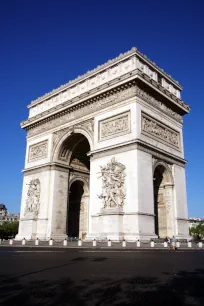
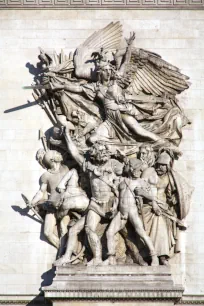
Napoleon’s Triumphal Arch
Construction
The arch was commissioned in 1806 by Napoleon to commemorate his victories. Construction started in 1810, but when the emperor was ousted five years later, all work was halted. It wasn’t until 1833, during the reign of King Louis-Philippe, that construction restarted. The arch was completed three years later, in 1836.
Design
The design of the arch by Jean Chalgrin is based on the Arch of Titus in Rome. The Arc de Triomphe is much higher (50 meters versus 15 meters), but it has exactly the same proportions.
The triumphal arch is adorned with many reliefs and sculptures commemorating treaties, battles, and soldiers. The four large sculpture groups on the front and back of the arch depict «The Triumph of 1810», which celebrates the Treaty of Schönbrunn, «The Resistance of 1814», which commemorates the French Resistance to the Allied Armies, «The Peace of 1815», which commemorates the Treaty of Paris, and finally «Departure of the Volunteers in 1792», which celebrates Revolutionary France. The latter is the most famous of the four and is better known as «The Marseillaise», a reference to the French anthem.
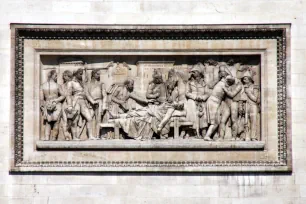
Six reliefs on the facades depict scenes from the Revolutionary and Napoleonic Wars, including the Battle of Aboukir, which resulted in Napoleon’s victory over the Turkish, and the Battle of Austerlitz, where Napoleon defeated the Austrian Empire. Right above the reliefs is a long frieze depicting soldiers. On the attic right above the frieze are thirty shields with the names of major French victories. Many more names are inscribed on the monument, including those of 158 battles and 660 military leaders.
Place Charles de Gaulle
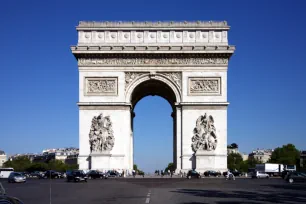
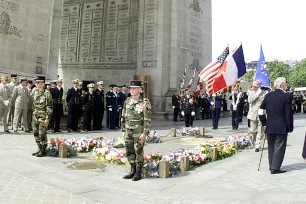
The Star Square
The arch is located at the end of the Champs-Élysées, in the middle of the Place Charles de Gaulle, a large circular square from which no less than twelve streets radiate. This star-shaped design gave the square its original name: Place de l’Étoile (square of the star). The square was renamed Place Charles de Gaulle in 1970, after the death of the French President Charles de Gaulle. Most of the avenues emanating from the square are named after French military leaders.
Tomb of the Unknown Soldier
Below the arch is the Tomb of the Unknown Soldier, honoring the many who died during the First World War. The tomb was installed here on November 11, 1920, but the unknown soldier from the First World War was buried here several months later, on January 28, 1921. In 1923 an eternal flame was added, which is rekindled every day at 18:30.
Rooftop terrace
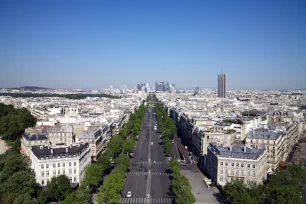
The top of the arch features a terrace from where you have great views of La Défense, the Champs-Élysées and the Sacré-Cœur. Make sure you take one of the underpasses to the arch (one entrance is at the Champs-Élysées, the other at the opposite end of the square); it is too dangerous to try and cross the street.
Be prepared to walk up 284 steps if you want to visit the roof terrace. An elevator is available for those who need it, but it only brings you to the attic; you still need to walk 46 more steps to reach the roof of the Arc de Triomphe.
- Next: Sacré-Cœur
- More Sights & Attractions in Paris
- Related articles:

